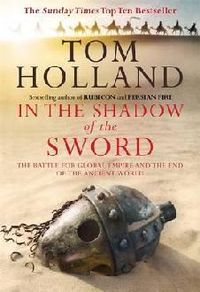 Updated about 4 hours after first posting — especially in the opening paragraphs of “The Arab conquests are FOLLOWED by the rise of Islam“.
Updated about 4 hours after first posting — especially in the opening paragraphs of “The Arab conquests are FOLLOWED by the rise of Islam“.
Historian and novelist Tom Holland raises some fascinating questions about the evidence pertaining to the origins of the Muslim religion. Is it possible that all three “religions of the book” will go down in history as having their foundations exposed as mythic in the late twentieth and early twenty-first centuries?
I have not yet read Holland’s book In the Shadow of the Sword [link is to Wikipedia article] but yesterday I listened to an extended radio interview with him (see/hear Tom Holland At Adelaide Writer’s Week) and watched UK’s Channel 4 documentary about Holland’s thesis, Islam, the Untold Story, on vimeo. (The audio interview is by far superior to the video documentary: the interview covers more detail and explanation of the thesis in its first 30 minutes than is broached in the entire doco.)
The traditional account
Muhammad is an illiterate merchant in the city of Mecca.
Mecca is a great pagan cult centre — no Jews or Christians there.
When 40 years old Muhammad hears voice of an angel giving directions from God.
Muhammad is last of the prophets. His teaching of monotheism offends the pagans who exile him to Medina.
Muhammad wins over the Arabs and regains Mecca. All Arabia becomes Muslim.
The teachings are all oral. Nothing written at this stage, but the Arabs converted to the Muslim religion as it is known today.
Arabs are inspired by his teaching to spread the word. That God is with them is evident from the miracle that they are able to overthrow both the Roman and then the Persian empires.
Their empire is proof that the Muhammad was the prophet of God.
Holland’s challenge
Holland, however, says that the evidence informs us of Arab conquests, not Muslim conquests, in the seventh century.
The earliest sources for Muhammad’s life are from around 800 CE. — almost 200 years after he existed. There are no lives of the prophet, no histories, no accounts of the conquests written by the Arabs, no commentaries on the Qur’an — then suddenly around 800 there is a great explosion of all of these.
Another “conspiracy of silence” and other problems
How to explain this silence? Continue reading “Islam, the Untold Story”
